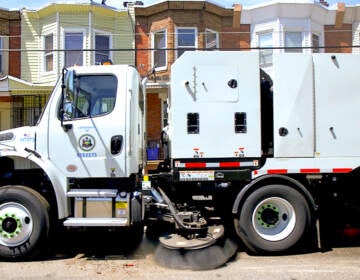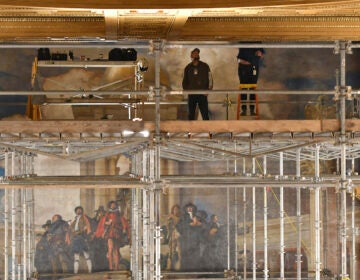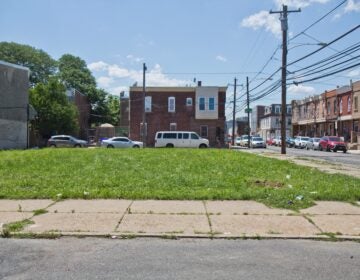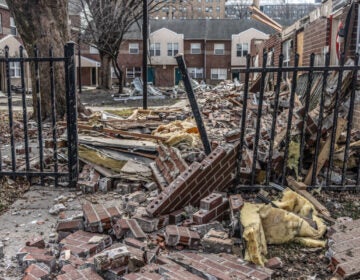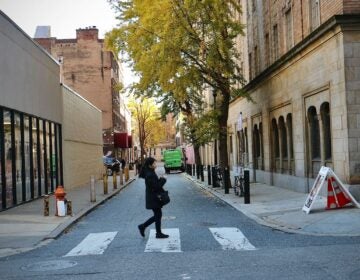Want speed cushions on your street? Philly is making it easier to request them
The city has also expanded the program to more blocks.
Listen 1:12
Speed cushions on North 13th Street in Philadelphia. (Kimberly Paynter/WHYY)
Have a question about Philly’s neighborhoods or the systems that shape them? PlanPhilly reporters want to hear from you! Ask us a question or send us a story idea you think we should cover.
Philadelphia’s Streets Department has streamlined the process for residents to request traffic calming measures for their block.
For years, residents had to send a letter asking the city to conduct a traffic calming study to determine if conditions on their street warranted any devices, including speed cushions. Some requests also came through City Council offices on behalf of constituents.
But starting last week, all requests can now be made through Philly311, the city’s customer service center for non-emergency inquiries. Residents can make their requests online, through the app or over the phone.
Residents who submitted requests under the old system do not need to make a new one.
“This is really an update to make the request process streamlined so that everything happens through 311 and automatically is easier for us and for the residents to track the requests,” said Lily Reynolds, director of federal infrastructure strategy with the city’s Office of Transportation, Infrastructure and Sustainability.
At the same time, the city has expanded the program by making more blocks eligible for traffic calming measures. Residents on narrow arterial streets and shorter blocks can now make requests. And they can look up their block online to see if it’s eligible.
State highways and arterials, as well as curving roads or roads with uphill or downhill grades of 15% or more, are not eligible for review.
Once a request is made, the city will assign a preliminary priority score, another tweak to the system. Previously, the city fielded requests on a first-come, first-served basis.
The priority score is based on safety data, pedestrian activity, and equity data, including neighborhood demographics. Final scores will dictate the order in which approved blocks receive traffic calming measures. Additionally, requesting residents won’t have to gather and submit a neighborhood petition until later in the process.
In the past, residents had to submit the petition with their initial request.
“That we heard was quite frustrating when residents found out that their location wasn’t eligible for example, or they found out that they weren’t going to move forward to construction,” said Reynolds.
The updates to the program do not come with any additional funding, meaning the city will not be installing more traffic calming measures than they are currently.
Speed cushions, for example, are only installed on Saturdays. And it typically takes six months to a year for a block to receive them.
Under the new workflow, the city has committed to reviewing high-priority requests three times a year.
The changes come as Philly continues to contend with what advocates consider a traffic safety crisis.
City-held data shows that at least 40 people died in hit-and-runs in 2023, the majority of them pedestrians. That’s more than double the total recorded in 2019.
The city’s traffic death rate outpaces other big cities in the country, including New York and Chicago.

Subscribe to PlanPhilly
WHYY is your source for fact-based, in-depth journalism and information. As a nonprofit organization, we rely on financial support from readers like you. Please give today.




